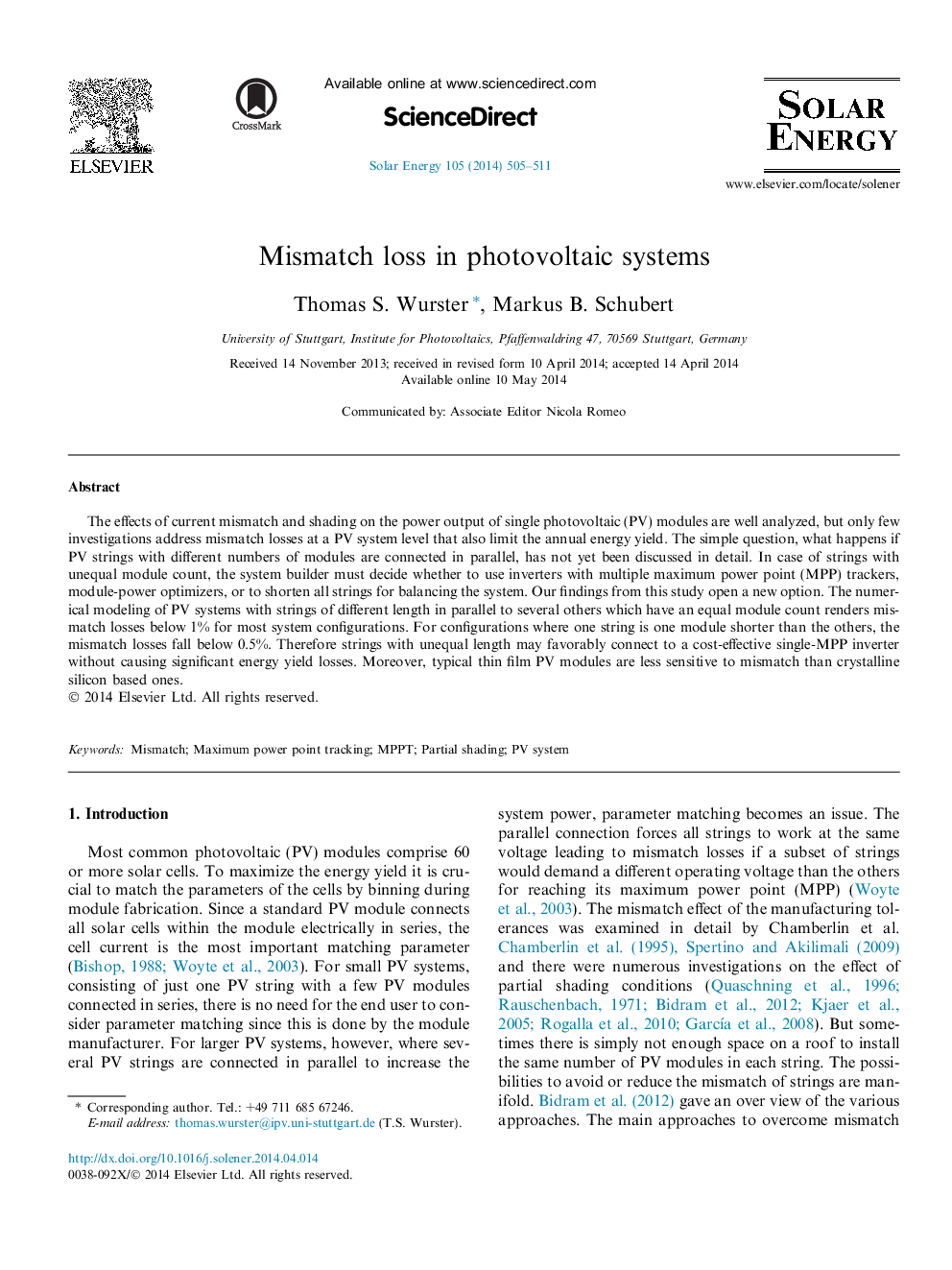| کد مقاله | کد نشریه | سال انتشار | مقاله انگلیسی | نسخه تمام متن |
|---|---|---|---|---|
| 1550072 | 1513113 | 2014 | 7 صفحه PDF | دانلود رایگان |
• Wide variety of PV system configurations analyzed (strings with 10–20 modules, up to 40 strings in parallel).
• Effect of real IV characteristics of monocrystalline and amorphous modules vs. one-diode model evaluated.
• The modeling reveals that the relative mismatch loss is limited to L < 1% for most common PV installations.
• Thin film technologies with lower efficiency benefit from their lower fill factor; show lower mismatch losses.
• The found robustness by design of PV systems questions the requirement of expensive power optimizers.
The effects of current mismatch and shading on the power output of single photovoltaic (PV) modules are well analyzed, but only few investigations address mismatch losses at a PV system level that also limit the annual energy yield. The simple question, what happens if PV strings with different numbers of modules are connected in parallel, has not yet been discussed in detail. In case of strings with unequal module count, the system builder must decide whether to use inverters with multiple maximum power point (MPP) trackers, module-power optimizers, or to shorten all strings for balancing the system. Our findings from this study open a new option. The numerical modeling of PV systems with strings of different length in parallel to several others which have an equal module count renders mismatch losses below 1% for most system configurations. For configurations where one string is one module shorter than the others, the mismatch losses fall below 0.5%. Therefore strings with unequal length may favorably connect to a cost-effective single-MPP inverter without causing significant energy yield losses. Moreover, typical thin film PV modules are less sensitive to mismatch than crystalline silicon based ones.
Figure optionsDownload as PowerPoint slide
Journal: Solar Energy - Volume 105, July 2014, Pages 505–511
